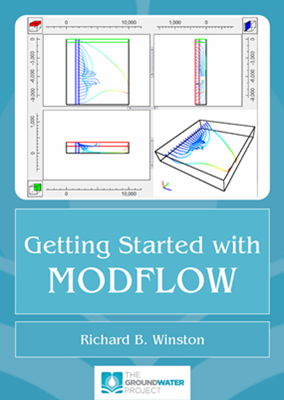Getting Started with MODFLOW

Publication year: 2023
Number of pages: 242
ISBN: 978-1-77470-030-3
Author:
Richard B. Winston: Maryland, USA
Updated: 20 November 2023
Getting Started with MODFLOW
Getting Started with MODFLOW Exercise Files
Description
Numerical modeling of groundwater flow systems was once accessible only to modeling specialists in the hydrogeological community. Software such as MODFLOW—the most frequently used groundwater modeling program in the world—and associated graphical user interfaces (GUIs) have made modeling possible for most groundwater scientists. This book provides the bridge from understanding to implementing models by introducing the basics of MODFLOW version 6 and providing readers who have a working knowledge of groundwater flow with a guide through construction of their first groundwater model.
The author helps the reader understand the conceptual basis of MODFLOW while avoiding detailed mathematics. The book begins with how to install the program and use it to simulate groundwater flow. Exercises lead the reader step-by-step through model set up so that they can apply it to their own field data. The exercises use the free graphical user interface ModelMuse but are explained in a way that allows the reader to use another GUI if they prefer. The hands-on learning culminates in a final exercise that demonstrates how a MODFLOW model is constructed for a field site.
This “getting started” guidebook is intended to help the user go beyond the basics. MODFLOW is a powerful tool for gaining insight into hydrogeological controls on flow in a groundwater system. Accordingly, users can apply MODFLOW to further refine their thinking at all stages of their project—including the early stages in which they develop and improve the underlying conceptual model.
Thus, this book Getting Started with MODFLOW enables hydrogeologists who do not specialize in modeling to participate in flow simulation to predict and investigate groundwater flow and head in response to human activities and natural phenomena. The book provides wider accessibility to this powerful tool for those working in education, research, management, protection, and remediation of groundwater flow systems.

